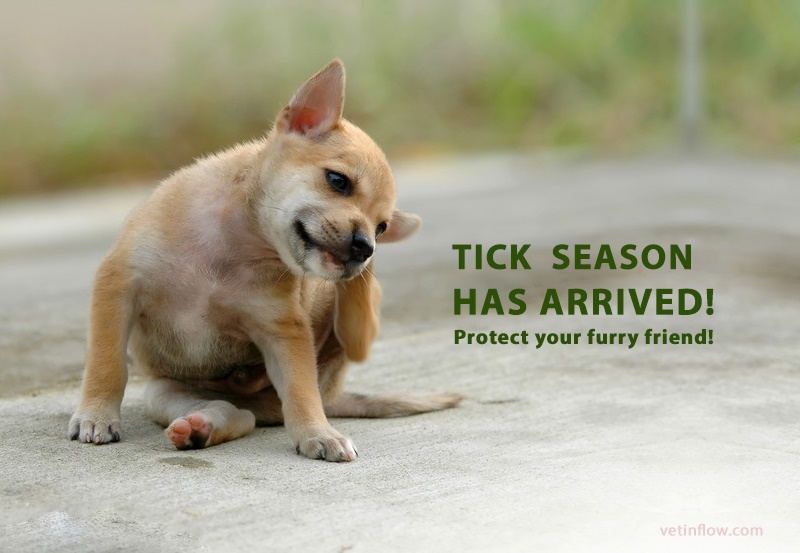
Tick season has arrived! Protect your furry friend!

These parasites have a pointed head and a barbed structure in their mouth that is used to attach themselves to the skin of their host where they will feed for several days.
It is very common for these nasty parasites to go unnoticed by owners, hidden in their pets' fur, until engorged females become easier to see. During the feeding process females will engorge with blood and increase their size considerably. Their body has an amazing capacity for distension and they can measure around one centimetre in length (about the size of a small bean). Males are smaller, with a flattened body and therefore much harder to find.
Ticks usually prefer areas where the skin is thinner: ears, face, armpits, between the toes and on the stomach and tail areas but they can really be found anywhere on an animal's body.
These blood sucking parasites cause great discomfort to our pets because their bite causes itchiness and they can lead to anaemia if there is a large number of ticks feeding on the same animal.
Ticks activity is seasonal and in the UK there are two typical peaks where tick infestation is more likely to occur: the first one is from March to June and the second from August to November.
It is recommended for owners to frequently check their pets for ticks and remove them as soon as they are found. Unfortunately ticks are vectors of diseases that can be transmitted to both companion animals and humans (ex. Lyme disease) and their quick removal will help reduce the risk of any disease being transmitted. When removing a tick please make sure all of it is removed. Any embedded mouth parts that are left being behind can lead to the appearance of small abscesses. An effective way to avoid this is to use a tick remover device.
Consult your vet regarding your pet's external parasite control. It is very important to reduce to the minimal the number of ticks that can establish a hold on your pet. Keep in mind ticks can easily move from one pet to another. This means that all pets in a household should be protected, not just the ones where ticks are found.
When applying any parasite control product please make sure you carefully read the product's label in order to use it correctly, since many tick control products destined for dogs can be very toxic to cats.
Would you like to know more about cats and dogs? Check our Feline and Canine Courses:
Feline courses
Canine courses
Read the previous article: Equine oral health Why is it important?

